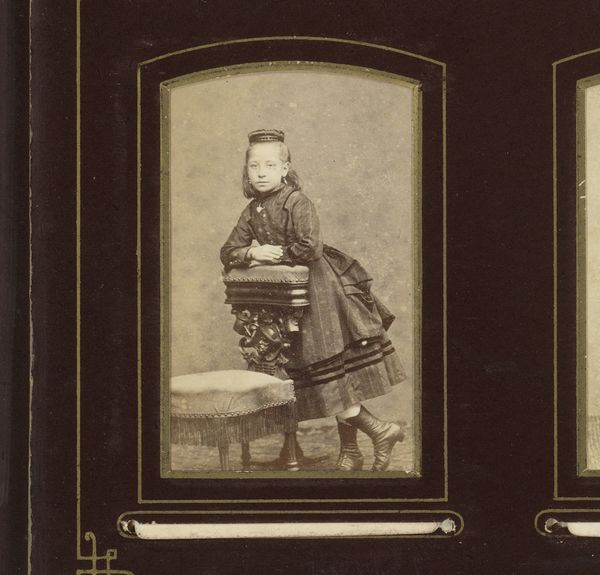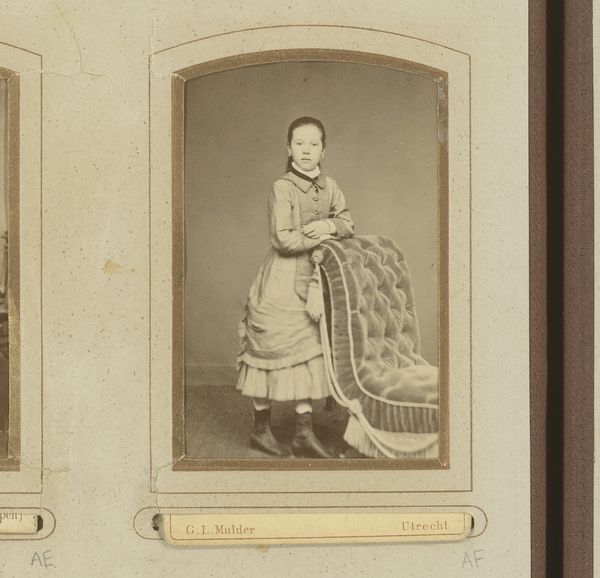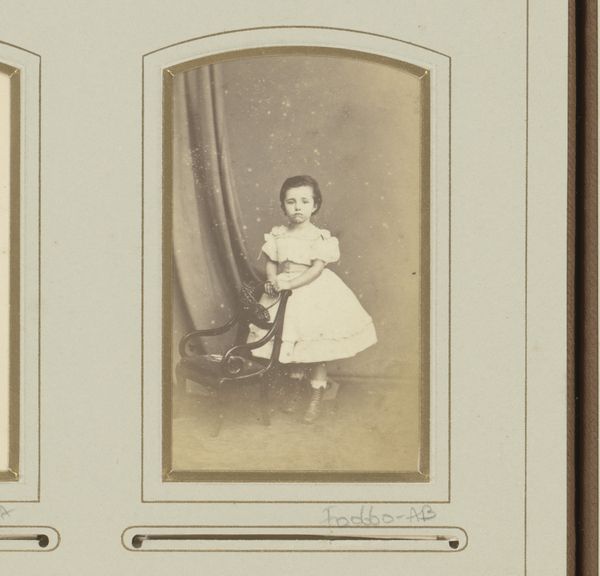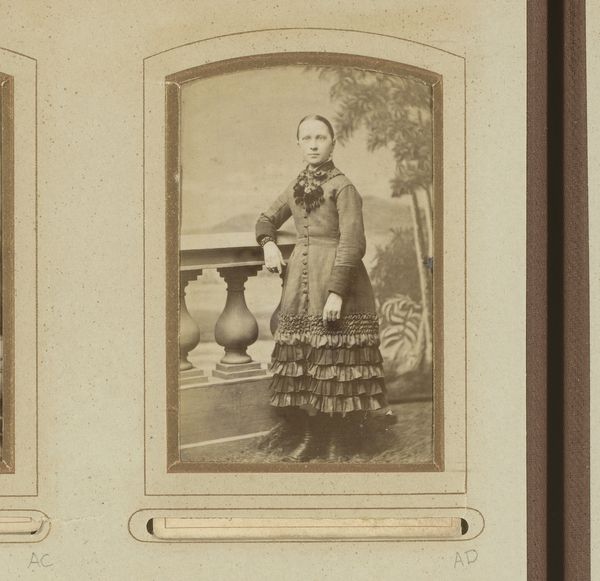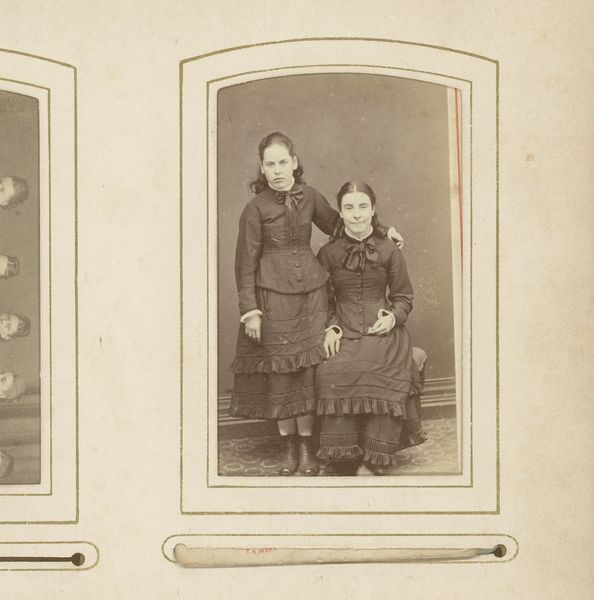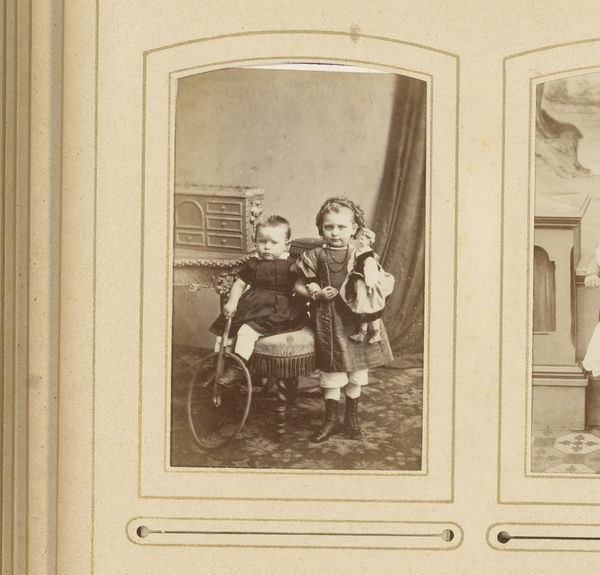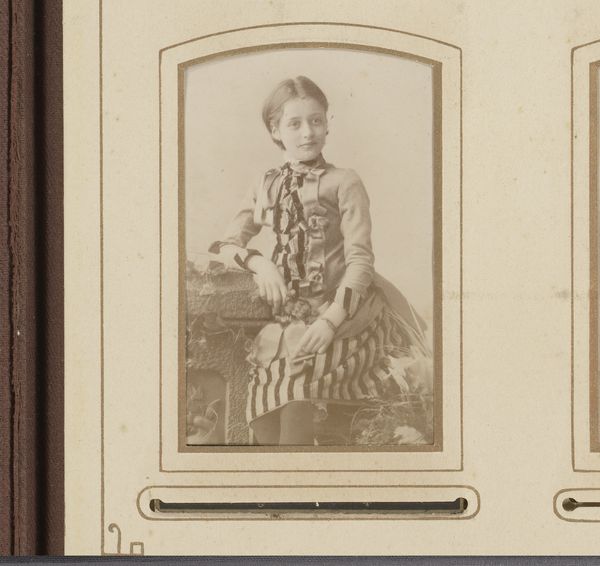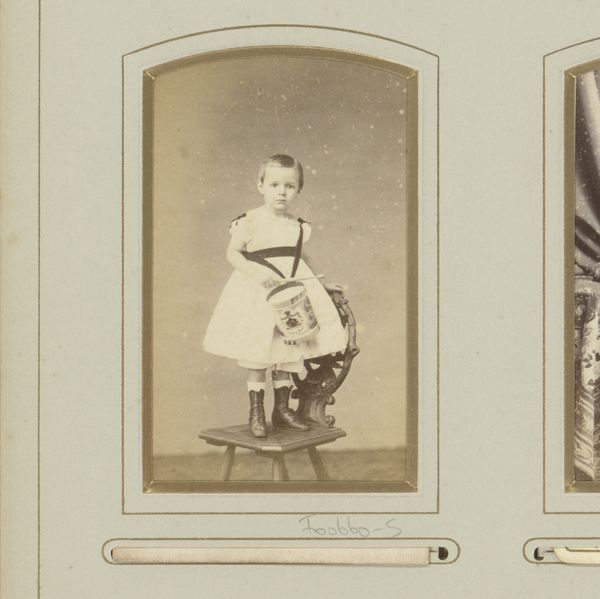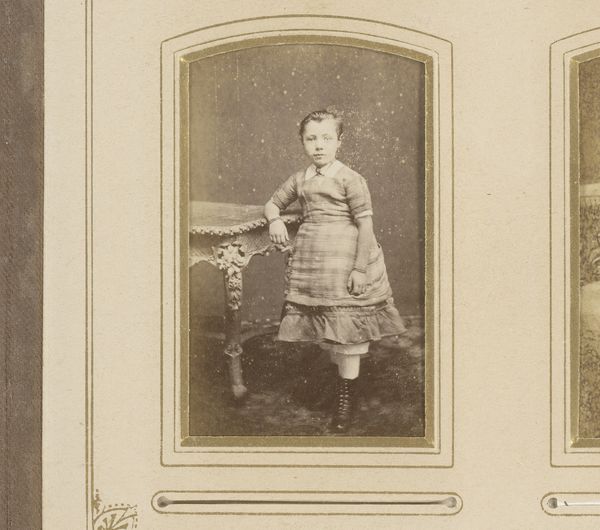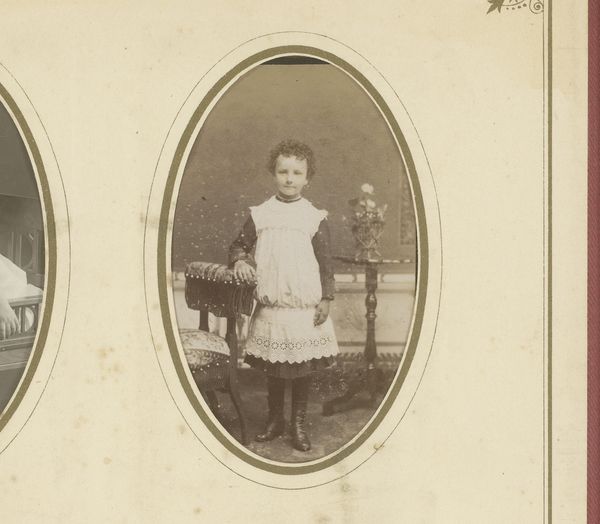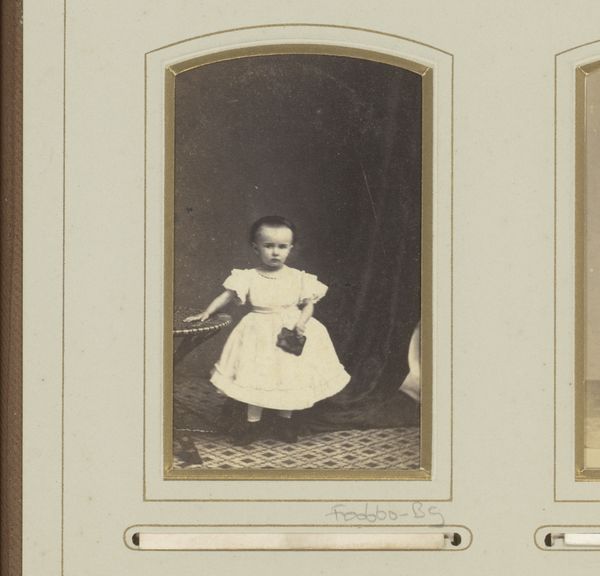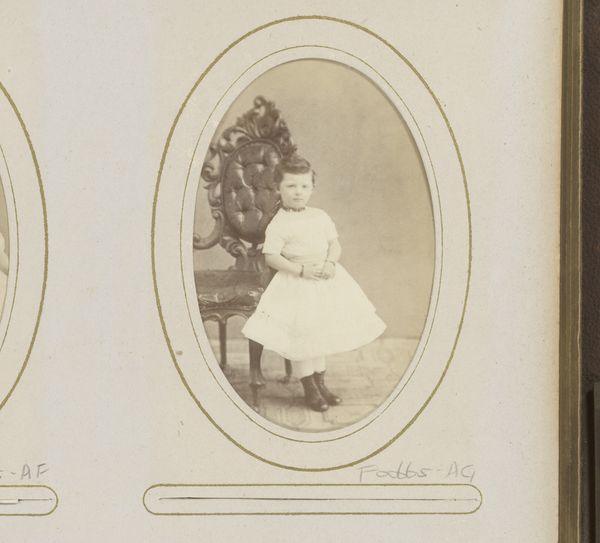
Portret van een meisje staand bij een stoel met een voet op een boomstam 1882 - 1894
0:00
0:00
photography
#
portrait
#
photography
#
historical photography
#
19th century
#
genre-painting
Dimensions: height 84 mm, width 53 mm
Copyright: Rijks Museum: Open Domain
Curator: Here we have a photographic portrait of a girl standing beside a chair, with her foot resting on a tree trunk. The work is simply titled "Portret van een meisje staand bij een stoel met een voet op een boomstam", by Jacques Chits, created sometime between 1882 and 1894. Editor: Immediately, what strikes me is the girl's expression, so self-possessed. Her attire, that distinctive plaid fabric of her dress and the intricate lace collar, speak of a particular social standing, of materials consciously selected. Curator: Indeed. Contextually, the rise of photography during this period afforded a new way for families, particularly those of means, to document their children's growth and social status. These portraits, beyond simple documentation, performed a social function, signaling class and aspiration. Consider the carefully staged setting, too. It’s meant to project an image of gentility, though the raw material is carefully obscured. Editor: Exactly! The construction of that backdrop, meant to mimic nature—the way the fabric of that manufactured nature contrasts against the girl’s stance on a real-looking tree trunk makes a striking claim about access to labor, material, nature, even. It reminds us of photography's materiality too. The way light interacts with the chemical processes to fix the image, making the final photographic print. Curator: Looking at it from a feminist theory lens, we could consider this as part of the larger phenomenon of representing young women at the time. The image constructs an ideal of bourgeois femininity – emphasizing decorum and perhaps constraining the very subject it intends to capture. Note the pose too: foot on the log but hands still controlled, one clutching a small piece of white cloth, both indicators of prescribed female passivity even amid a relatively 'natural' setting. Editor: The materials themselves—the paper stock of the photograph, the dyes used to achieve its sepia tones, even the likely photographer’s studio with all the associated costs like wages, upkeep, supplies and taxes are material things that are woven together to produce a representation like this one. Every choice involved reflects value. Curator: These portraits served as signifiers of class and markers in a society navigating evolving gender roles and expectations. To decode it allows insight into the era's values and norms. Editor: Looking closer at this, one begins to think more expansively about how something as everyday-seeming as a photographic portrait implicates both the sitter and those around her, bound up within networks of exchange and human toil.
Comments
No comments
Be the first to comment and join the conversation on the ultimate creative platform.
